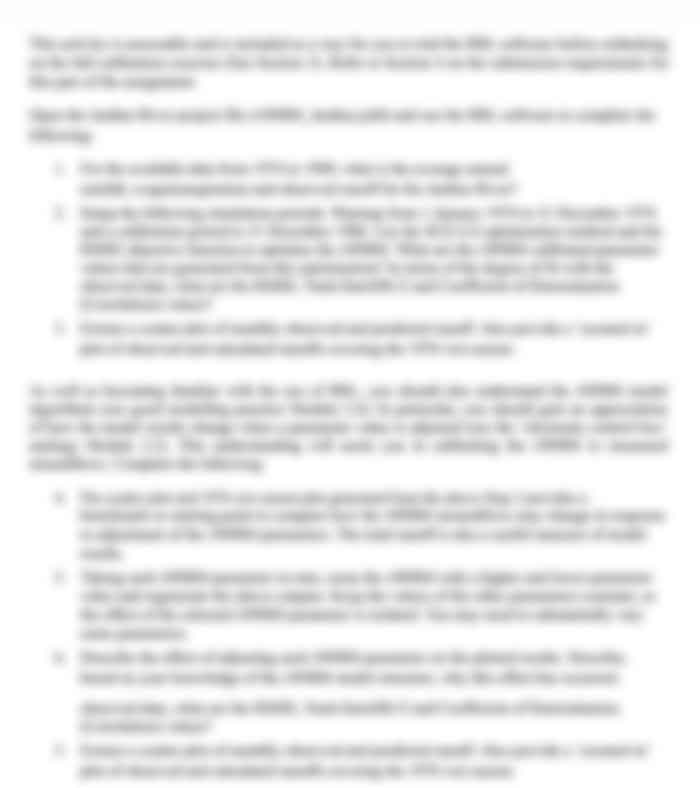AHCWHS301Workplace hazard identification Assignment
You must successfully complete each section of this assessment. If youranswers are assessed as being Not yet satisfactory, you will be asked to resubmit
your work.
Assessment checklist
Ensure all material is referenced appropriately including all websites and images.
Any photographic evidence that you use should always be captioned describingthe purpose of each image.
Acceptable file type for submission includes word or pdf. Where possible includeall parts of the assessment in one file. Should you need to attach multiple filesplease compile/compress them as a zip folder.
Preferred submission of completed assessment is electronic via the OLS.What you have to do
There are two parts to this assessment:
PART 1
You need to submit separate files or links to one (1) sample each of a COMPLETEDSDS, SWMS and SOP. Not a blank template.
You are not required to create your own. All you need to do is search on the internetfor examples that someone else has created. A good starting example is ChainsawSOP.
Note: Many commercial operations now use standard safety procedures, which mayoccur in a range of different forms:
You will find information about these types of documents in your Learning Resourceand on the websites such as the Safework NSW website and other equivalentinterstate websites.Entire documents can be uploaded or add your direct links here to thesedocuments.
PART 2
In this part, you are required to identify workplace hazards and develop strategies toenable you and your team to work safely.
The document How to manage work health and safety risks Code of practice fromNSW SafeWork will help you with this task. https://www.safework.nsw.gov.au/
Using the attached worksheets (see following pages), identify ten (10) workplacehazards that are commonly associated with a horticultural workplace and provide the
information required about each. You do not have to work in the industry to completethis. However, you need to acquire a good working knowledge of the work tasks and
hazards associated with the horticultural workplace and/or general horticultureindustry.
NB You must select at least one (1) from each category in the list below (ten {10}categories in total):
HAZARD LIST
Chemical hazards including use of herbicides & pesticides and fertilisers,exposure to fuels, solvents, dust, vapours etc.; smoke inhalation etc.
Electrical exposure directly or indirectly.
Machinery and equipment (Plant) including use of tools and equipment. Being hitby vehicles or injured by moving parts.
Physical hazards including exposure to loud noise, poor lighting, radiation,vibration etc.
Biological hazards microorganisms this might include exposure to soil or mulchborne bacteria; infectious diseases. Also includes animals such as spiders, snakesand stinging/biting insects etc.
Manual handling incurred from trying to move loads that are too heavy orawkward, repetitive movements.
Working at heights such as use of ladders or tree climbing work.
Psychological hazards caused by a difficult or stressful work environment, workrelated fatigue and bullying.
Gravity Falling objects, falls, slips and trips of people can cause major injuries.
Extreme temperatures heat stroke, fatigue, or cold such as frostbite.
There may be other work-specific hazards that need special consideration but are notlisted above e.g.:
Radiation solar, ultraviolet, microwave and lasers etc.As you may not actually be working on the site you will have to use some imaginationto decide on the range of work operations that would normally be carried out on thenominated worksite.
You may have to carry out a little research to locate information about work hazards.
To enable you to complete the Risk Assessment Worksheet attached, please review
the following terminology:
Task - The job that is being undertaken.
Hazard - A situation, environment or item that has the potential to harm a person.
Harm - The injury/illness, which is inflicted.
Likelihood of harm - Possibility that injury or illness may occur based on the
regularity of the task carried out and resulting past injuries or illness. Use one of
these terms:
? Certain to occur - expected to occur in most circumstances
? Very likely - will probably occur in most circumstances
? Possible - might occur occasionally
? Unlikely - could happen at some time
? Rare - may happen only in exceptional circumstances.
Level of risk - The severity of harm (e.g. death, serious injury, mild injury orillness) that might occur when exposed to a hazard. Risk Control safety strategy - List all hazard mitigation strategies that you thinkcould be employed on the site to minimise the risk to health and safety. Eliminatinga hazard will also remove any risks associated with that hazard. Your strategy mayrefer to any documents that are available for this type of risk such as Safety DataSheets (SDSs); Standard Operating Procedures (SOPs); or Safe Work MethodStatements (SWMSs). You should also list the source of these documents.

